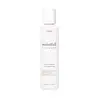What's inside
What's inside
 Key Ingredients
Key Ingredients

No key ingredients
 Benefits
Benefits

 Concerns
Concerns

No concerns
 Ingredients Side-by-side
Ingredients Side-by-side

Water
Skin ConditioningGlycerin
HumectantButylene Glycol
HumectantCetyl Ethylhexanoate
EmollientDicaprylyl Carbonate
Emollient1,2-Hexanediol
Skin ConditioningSqualane
EmollientCetearyl Alcohol
EmollientCaprylic/Capric Triglyceride
MaskingCaprylyl Methicone
Skin ConditioningPalmitic Acid
EmollientGlyceryl Stearate
EmollientCetyl Alcohol
EmollientArgania Spinosa Kernel Oil
EmollientBifida Ferment Lysate
Skin ConditioningStearic Acid
CleansingEthylhexyl Olivate
Skin ConditioningArginine
MaskingC12-16 Alcohols
EmollientSodium Acrylates Copolymer
Hydrogenated Lecithin
EmulsifyingAcrylates/C10-30 Alkyl Acrylate Crosspolymer
Emulsion StabilisingPolyglyceryl-4 Oleate
EmulsifyingCarbomer
Emulsion StabilisingEthylhexylglycerin
Skin ConditioningDisodium EDTA
Myristic Acid
CleansingWater, Glycerin, Butylene Glycol, Cetyl Ethylhexanoate, Dicaprylyl Carbonate, 1,2-Hexanediol, Squalane, Cetearyl Alcohol, Caprylic/Capric Triglyceride, Caprylyl Methicone, Palmitic Acid, Glyceryl Stearate, Cetyl Alcohol, Argania Spinosa Kernel Oil, Bifida Ferment Lysate, Stearic Acid, Ethylhexyl Olivate, Arginine, C12-16 Alcohols, Sodium Acrylates Copolymer, Hydrogenated Lecithin, Acrylates/C10-30 Alkyl Acrylate Crosspolymer, Polyglyceryl-4 Oleate, Carbomer, Ethylhexylglycerin, Disodium EDTA, Myristic Acid
Water
Skin ConditioningHydrolyzed Collagen 18.68%
EmollientGlycerin
HumectantPropanediol
SolventPentaerythrityl Tetraethylhexanoate
EmollientMethyl Trimethicone
Skin ConditioningHydrogenated Poly(C6-14 Olefin)
Emollient1,2-Hexanediol
Skin ConditioningButylene Glycol
HumectantCetyl Ethylhexanoate
EmollientC14-22 Alcohols
Emulsion StabilisingGlyceryl Stearate Citrate
EmollientHydroxyethyl Acrylate/Sodium Acryloyldimethyl Taurate Copolymer
Emulsion StabilisingArachidyl Alcohol
EmollientGlyceryl Stearate
EmollientCarbomer
Emulsion StabilisingXanthan Gum
EmulsifyingC12-20 Alkyl Glucoside
EmulsifyingBehenyl Alcohol
EmollientGlyceryl Caprylate
EmollientTromethamine
BufferingArachidyl Glucoside
EmulsifyingDisodium EDTA
Ethylhexylglycerin
Skin ConditioningSorbitan Isostearate
EmulsifyingHydrolyzed Lupine Protein
Skin ConditioningGlucose
HumectantTocopherol
AntioxidantWater, Hydrolyzed Collagen 18.68%, Glycerin, Propanediol, Pentaerythrityl Tetraethylhexanoate, Methyl Trimethicone, Hydrogenated Poly(C6-14 Olefin), 1,2-Hexanediol, Butylene Glycol, Cetyl Ethylhexanoate, C14-22 Alcohols, Glyceryl Stearate Citrate, Hydroxyethyl Acrylate/Sodium Acryloyldimethyl Taurate Copolymer, Arachidyl Alcohol, Glyceryl Stearate, Carbomer, Xanthan Gum, C12-20 Alkyl Glucoside, Behenyl Alcohol, Glyceryl Caprylate, Tromethamine, Arachidyl Glucoside, Disodium EDTA, Ethylhexylglycerin, Sorbitan Isostearate, Hydrolyzed Lupine Protein, Glucose, Tocopherol
Ingredients Explained
These ingredients are found in both products.
Ingredients higher up in an ingredient list are typically present in a larger amount.
1,2-Hexanediol is a synthetic liquid and another multi-functional powerhouse.
It is a:
- Humectant, drawing moisture into the skin
- Emollient, helping to soften skin
- Solvent, dispersing and stabilizing formulas
- Preservative booster, enhancing the antimicrobial activity of other preservatives
Butylene Glycol (or BG) is used within cosmetic products for a few different reasons:
Overall, Butylene Glycol is a safe and well-rounded ingredient that works well with other ingredients.
Though this ingredient works well with most skin types, some people with sensitive skin may experience a reaction such as allergic rashes, closed comedones, or itchiness.
Learn more about Butylene GlycolCarbomer is a polymer of acrylic acid. Its main role is to create a gel consistency.
A high amount of carbomer can cause pilling or balling up of products. Don't worry, most products contain 1% or less of carbomer.
Cetyl Ethylhexanoate is an emollient ester. It comes from cetearyl alcohol and 2-ethylhexanoic acid.
Cetyl Ethylhexanoate is an emollient that adds a velvety feel to skin without being greasy or oily. Emollients help trap moisture into your skin, keeping your skin soft and hydrated.
Disodium EDTA plays a role in making products more stable by aiding other preservatives.
It is a chelating agent, meaning it neutralizes metal ions that may be found in a product.
Disodium EDTA is a salt of edetic acid and is found to be safe in cosmetic ingredients.
Learn more about Disodium EDTAEthylhexylglycerin (we can't pronounce this either) is commonly used as a preservative and skin softener. It is derived from glyceryl.
You might see Ethylhexylglycerin often paired with other preservatives such as phenoxyethanol. Ethylhexylglycerin has been found to increase the effectiveness of these other preservatives.
Glycerin is already naturally found in your skin. It helps moisturize and protect your skin.
A study from 2016 found glycerin to be more effective as a humectant than AHAs and hyaluronic acid.
As a humectant, it helps the skin stay hydrated by pulling moisture to your skin. The low molecular weight of glycerin allows it to pull moisture into the deeper layers of your skin.
Hydrated skin improves your skin barrier; Your skin barrier helps protect against irritants and bacteria.
Glycerin has also been found to have antimicrobial and antiviral properties. Due to these properties, glycerin is often used in wound and burn treatments.
In cosmetics, glycerin is usually derived from plants such as soybean or palm. However, it can also be sourced from animals, such as tallow or animal fat.
This ingredient is organic, colorless, odorless, and non-toxic.
Glycerin is the name for this ingredient in American English. British English uses Glycerol/Glycerine.
Learn more about GlycerinGlyceryl Stearate is a mix of glycerin and stearic acid.
It is used to stabilize the mixing of water and oil ingredients. By preventing these ingredients from separating, it can help elongate shelf life. It can also help thicken the product's texture.
As an emollient, it helps soften skin and supports barrier-replenishing ingredients.
In cosmetics, Glyceryl Stearate is often made from vegetable oils or synthetically produced.
This ingredient may not be fungal-acne safe
Fun fact: The human body also creates Glyceryl Stearate naturally.
Learn more about Glyceryl StearateWater. It's the most common cosmetic ingredient of all. You'll usually see it at the top of ingredient lists, meaning that it makes up the largest part of the product.
So why is it so popular? Water most often acts as a solvent - this means that it helps dissolve other ingredients into the formulation.
You'll also recognize water as that liquid we all need to stay alive. If you see this, drink a glass of water. Stay hydrated!
Learn more about Water